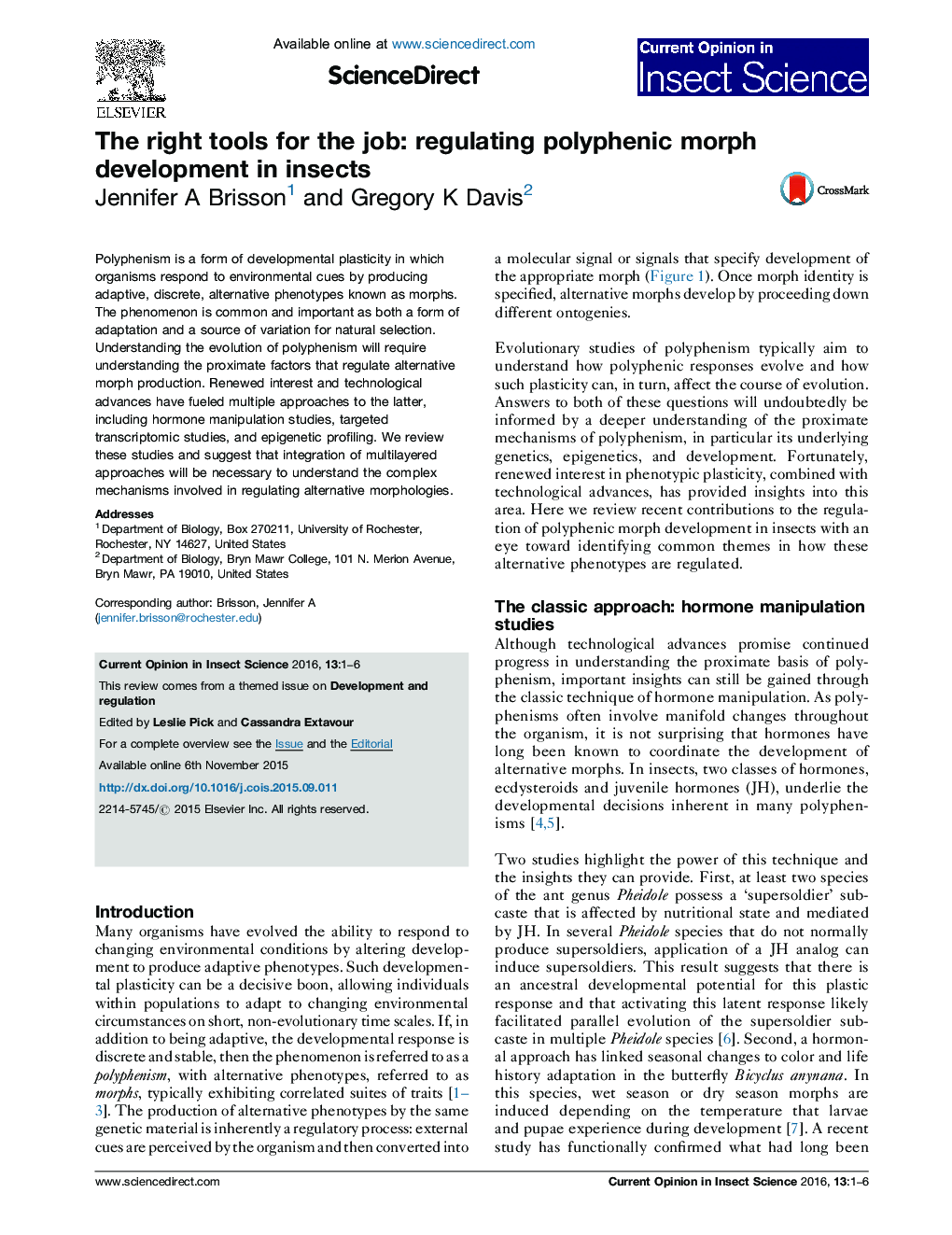| Article ID | Journal | Published Year | Pages | File Type |
|---|---|---|---|---|
| 4508199 | Current Opinion in Insect Science | 2016 | 6 Pages |
•Many insects can produce adaptive, polyphenic morphs in response to environmental cues.•The regulatory mechanisms underlying polyphenism are slowly being revealed.•Hormonal and transcriptomic approaches have revealed specific mechanisms.•Epigenetic approaches are promising, yet further study is needed.
Polyphenism is a form of developmental plasticity in which organisms respond to environmental cues by producing adaptive, discrete, alternative phenotypes known as morphs. The phenomenon is common and important as both a form of adaptation and a source of variation for natural selection. Understanding the evolution of polyphenism will require understanding the proximate factors that regulate alternative morph production. Renewed interest and technological advances have fueled multiple approaches to the latter, including hormone manipulation studies, targeted transcriptomic studies, and epigenetic profiling. We review these studies and suggest that integration of multilayered approaches will be necessary to understand the complex mechanisms involved in regulating alternative morphologies.
